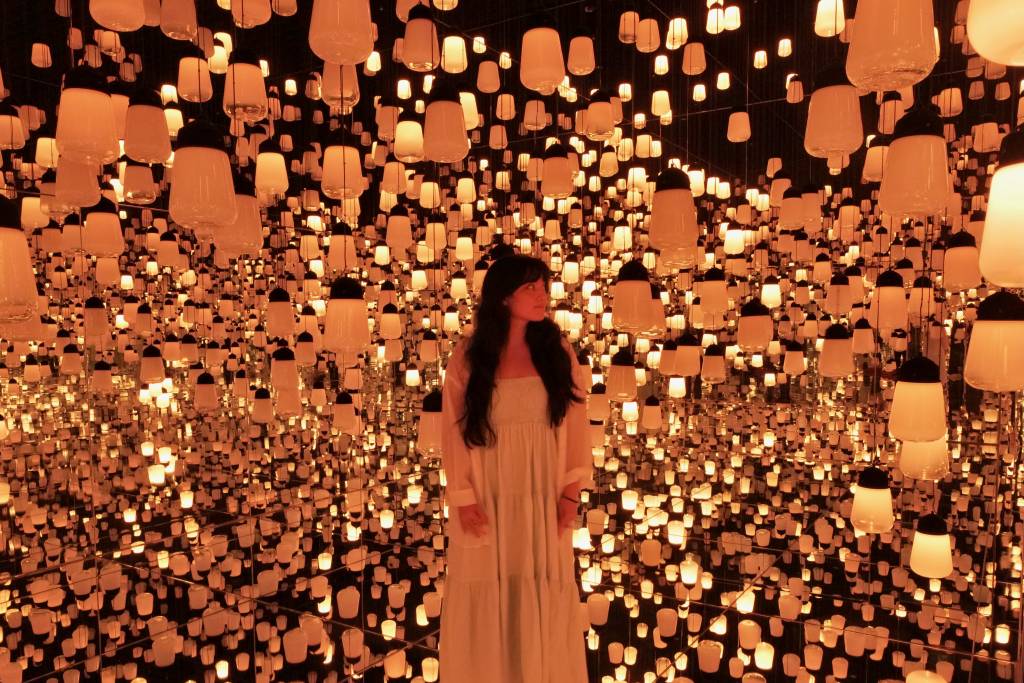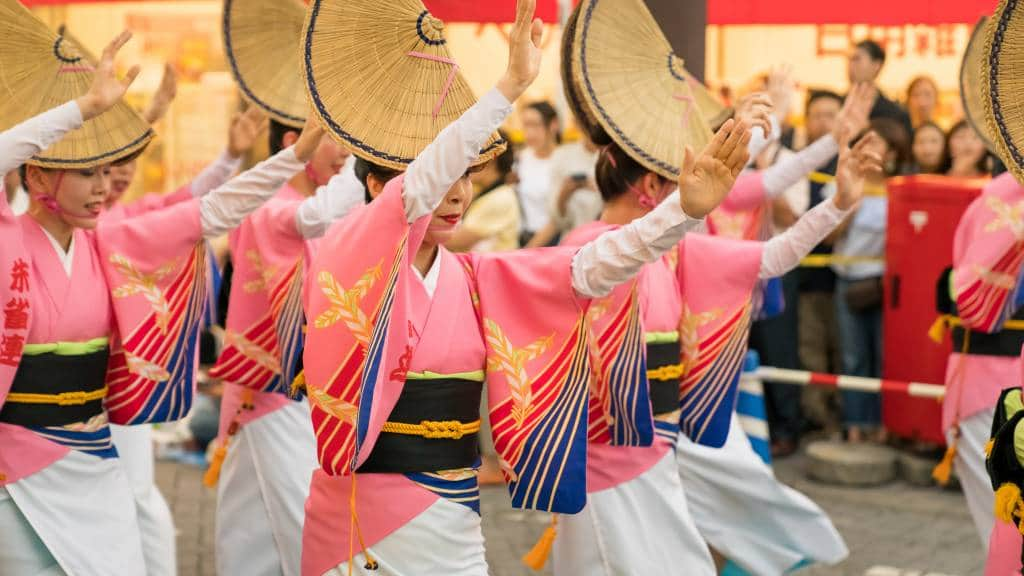Planning a trip around Japan involves some tough decisions when it comes to picking which cities to visit.
Aside from Tokyo, there are three big cities. And while we’re not claiming Tokyo is an absolute must, it’s often a given (partly due to flights), so we’ll stick to the outliers. Kyoto, Osaka and Hiroshima form the golden trio—all with easy reach of each other, all with their own highlights. But what if you can’t hit all three? If you are struggling with which Japanese cities to choose or looking for alternatives, we’ve got a few suggestions.

1. Kyoto: Perfect for culture lovers and temple hoppers

Easily the number-one destination after Tokyo, Kyoto is the ancient capital and heart of Japan’s cultural history. Known for being stylish and having a slower pace of life, Kyoto is picturesque and knows it—kind of like the ‘popular girl’ at school who was actually really nice that you couldn’t help but like.
Why you should go
Some of the most well-known spots in Japan can be found here, including the eye-catching Kinkakuji, the winding streets of Gion and the bamboo forests of Arashiyama. With over 1,000 temples in total, Kyoto is the type of place you’ll need to spend a few days exploring (we have a handy two-day plan you can peruse to help you decide). It’s perfect for that old-Japan feel and has plenty of fewer-visited corners as well as the busier ones. There are also great nearby places to travel too, including Nara, Amanohashidate and Uji.
Why you shouldn’t
Kyoto is pretty busy, especially if you visit during its prettiest seasons (cherry blossom or autumn, or New Year… or summer? A lot of the time basically). Annual visitors have topped 50 million in recent years (nearly 140,000 a day if you divide it equally), so expect crowds and queues at all the sights. The tourism factor can make it pricier than a lot of places with less of a reputation, especially when it comes to hotels or ryokan. There are budget options of course, they just book up fast.
The verdict
Keep in mind that things are often popular for a reason (unless you’re talking about the Kardashians or Coldplay that is), so if you’ve never been, it can still be an amazing place to see (plus it’s only going to get busier). Otherwise, consider some alternatives (below).
The alternatives: Kanazawa and Kamakura

If you’re looking for a similar feel, but have already been to Kyoto or just don’t fancy it, there are some great alternatives. Kanazawa is a smaller city known for beautifully preserved Edo districts where geisha serve tea and entertain. There is a history of gold-leaf production as well as the stunning 17th-century Kenrokuen Garden and the food haven of Omicho Market. Usually a stop-off rather than a destination, it’s a city with a lot to offer—especially if you stay a few days and explore fully.
If you’re staying closer to Tokyo, Kamakura is known as “Little Kyoto” partly due to it being a capital city in the distant past, but also thanks to the number of temples. A far cry from Tokyo’s busy neon feel, but only an hour away by train, Kamakura a more manageable option. If you’re looking for more Tokyo-based locations that have a hint of Kyoto, we have a few more suggestions.
2. Osaka: One for the foodies and nightlife lovers

Osaka is the scruffier, friendlier and rougher (but in a good way) city of Japan. Osakans are known for being more direct, the nights last longer, and just as Kyotoites would go bankrupt for clothes, this city would do it for food.
Why you should go
If you’re the kind of person who bases their travel plans around food, then this has to be top of your list. Known for kuidaore (dining yourself into bankrupty), Osaka serves up nfamous dishes like okonomiyaki and takoyaki as well as lesser known options like kushikatsu. It’s also the home of kitsune udon and cup noodles.
The fabulously neon Dotonbori is packed with restaurants and has been the dedicated entertainment district for almost 400 years. This combination makes Osaka the best place for a night out (and the giant Asahi beer sign is no mere coincidence). With plenty of clubs, more bars than you could ever hope to visit and enough late-night ramen to see you through, a trip to Osaka is a thoroughly indulgent affair.
Why you shouldn’t
While Osaka has a fair few day-time sights to enjoy, it’s definitely less fun if you’re not into the food or social side. If you like quiet shrines and temples and can’t stand the idea of walking down busy streets for your third dinner of the night, maybe skip this one.
The verdict
Foodies, groups up for a night out and lovers of neon go right ahead. If you prefer serene gardens and are an “eat to live” kind of person, maybe don’t—or maybe do and it will change your life!
The alternative: Sapporo

Almost 5,000 km away, Sapporo is the perfect alternative to Osaka thanks to it’s proximity to nature, love of beer and fantastic food. As the capital of Hokkaido, Sapporo’s location means it just doesn’t get the visitors (besides during the famous annual snow festival), but it really should. Known as the home of beer, Sapporo has lots to offer in terms of musuems, Sapporo and Asahi brewery tours and beer halls, microbreweries and a strong whiskey scene thanks to Nikka. Food-wise you are spoiled for choice—the island is known for dairy and potatoes, while the city is known for butter ramen, soup curry and more. Last but not least, the Susukino District has all the neon of Osaka, so you won’t feel left out.
3. Hiroshima: History and tradition

A landmark in history for all the worst reasons, Hiroshima is a beautiful city with a balance of both somber and serene locations. While it would be strange to visit without going to the museums and peace park, it would be equally strange to limit the city to only these places—especially with a stunning castle, beautiful gardens and great food scene to explore.
Why you should go
If you’re particularly interested in history or feel you have a connection to the events of WWII, going to Hiroshima can be an incredibly personal and emotional trip. For those with a more general interest, it can be educational, moving and beautiful—a true lesson in the damages of war and the need for peace in the future. There are plenty of beautiful sights including Hiroshima Castle, Shukkei-en Gardens and the delicious local specialty of Hiroshima-style okonomiyaki. Nearby, the fantastic Miyajima is known for the floating gate and is only half an hour from the city.
Why you shouldn’t
This is a tough one—if you have no interest in history and other places rank higher on sights, then maybe skip Hiroshima. It is an important part of both Japan and the world’s past, however, so do consider the visit.
The alternative: Fukuoka

Not necessarily the obvious choice, but Fukuoka can be a great alternative to Hiroshima and is close to the city that may have first sprung to mind. A busy hub with a reputation for night-time food stalls, impressive shrines and temples as well as a healthy appetite for ramen—it’s a great introduction to the Kyushu region. If you’re looking for some war-related history, Nagasaki is near(ish), and Beppu has some great onsen to see and soak in. All in all it’s the perfect base for island explorations.
If you can’t choose or have some extra time, we have a 7-day itinerary and 14-day World Heritage based one for exploring Japan on the JR Pass!

























